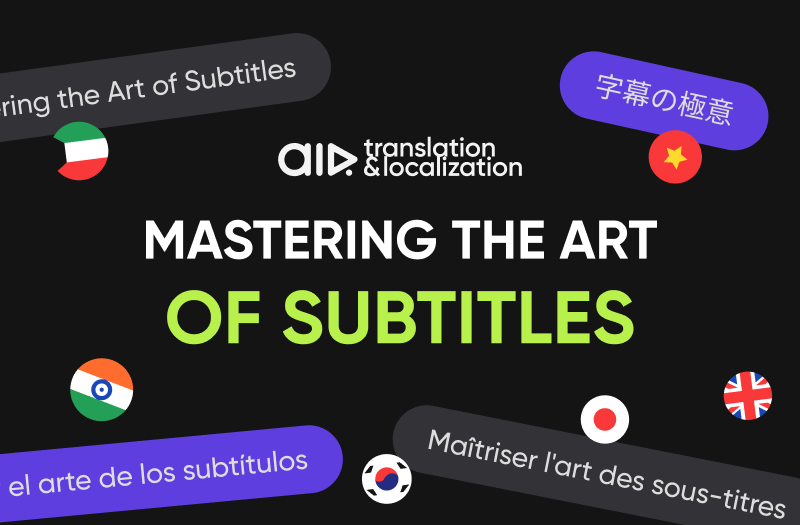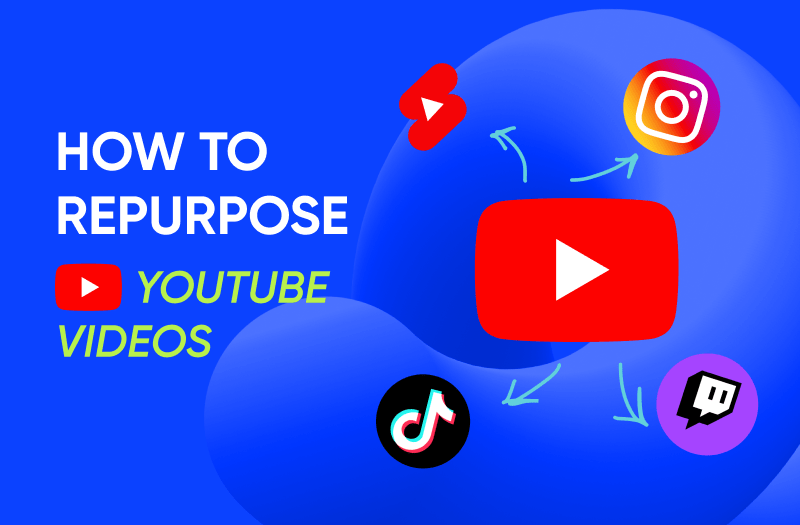How often do you use subtitles for your videos and how good are they?
Subtitles are a must-have for any video content. They make your videos accessible to a wider audience, including non-native speakers and people with hearing impairments. But not all subtitles are created equal. Poorly formatted subtitles can ruin the viewer's experience. To learn more about how to make your video on YouTube connect with diverse global audiences, clikc here.
Subtitle translation is one of the most basic things for creators who want to reach a global audience. But just as important as subtitles is metadata, which creators can translate using automated services. You can read more about YouTube metadata and its translation here.
For subtitling, metadata translation, dubbing, and even the creation of complete translated channels, you can contact AIR Media-Tech. We have helped many creators reach hundreds of millions of subscribers by translating and localizing their content into new languages. There are many strategies for making your content go global. Contact us to find out which translation, localization, or YouTube subtitles strategy is the best fit for your channel.
So, let's dive into some best practices for creating clear, effective, and professional subtitles for YouTube.
Understanding Subtitles: Long-Form vs. Short-Form
When it comes to subtitles, not all content is created equal. Let’s break down the differences between long-form and short-form subtitles and how to make them work for your videos.
Long-Form Subtitles
Long-form subtitles are used in movies, TV shows, and long videos. They usually include complete sentences and cover the entire dialogue. These subtitles are smaller in font size and often appear as longer sentences to match the extended content.
Short-Form Subtitles
Short-form subtitles are common in social media videos like Instagram Reels, TikTok, and YouTube Shorts. These subtitles are larger in font size and have shorter text clusters, making them perfect for quick, engaging content.
Key Elements of Effective Subtitles
Text Size and Color
Subtitles need to be readable. Text that’s too large can cover up the video, while text that’s too small can be hard to read. A simple sans-serif font usually works best.
Best choices:
- White text on a black background for high contrast.
- Black text on a white background for darker visuals.

Font Selection
Choosing the best fonts for YouTube subtitles is important for readability and setting the right tone.
- License
Ensure the font is available for commercial use if your video has ads.
- Availability
Choose fonts that are easily accessible in popular editing tools.
- Weight
Medium to bold weight is recommended for clarity.
- Aesthetic
Match the font style to your video's tone (formal for academic, casual for lifestyle content).
Placement of Subtitles
They are usually at the bottom of the screen, but placing them in the middle in short-form content can help with visibility. Avoid placing subtitles where they might block important visuals.
Synchronization and Timing

Subtitles for video need to sync perfectly with the spoken dialogue.
- Timing
Subtitles should stay on screen long enough to read, generally around 21 characters per second.
- Line Length
Aim for about 42 characters per line.
- Number of Lines
Keep it to two lines max for readability.
Line Breaks and Word Clustering
Ensure that line breaks occur at natural linguistic breaks, such as at the end of clauses or sentences. Avoid splitting important phrases or names across lines.
Punctuation and Grammar
Proper punctuation and grammar make subtitles easier to read and understand.
- Periods
Use at the end of sentences to signal completion.
- Question marks and exclamation points
Place immediately after the last character.
- Ellipses
Use for significant pauses within a subtitle.
Eliminating Non-Essential Sounds
Skip filler sounds like "um" and "uh" to keep subtitles clean and smooth.
Adding Emojis
Emojis can add expressiveness in short-form content but should be used sparingly to avoid overwhelming viewers.

Advanced Formatting Techniques
- Using Multiple Fonts
Different fonts can highlight different speakers or emphasize parts of the dialogue. Just ensure it's consistent and not distracting.
- Color and Size Contrast
Use different colors and sizes to differentiate speakers or highlight important dialogue. Ensure all text remains legible.
- Animating Subtitles
Subtle animations, like highlighting words as spoken, can enhance engagement in fast-paced or short-form content. Use sparingly to avoid overwhelming viewers.
Final Checks Before Publishing
Review and Adjust
Before you finish your video, review it to ensure it's in sync and the subtitles are readable and formatted correctly.
YouTube subtitle rules:
- Synchronization
Ensure subtitles match the audio timing.
- Visibility duration
Confirm subtitles stay on screen long enough to be read easily.
- Line breaks and length
Check for consistent line breaks and appropriate length.
Test with an Audience
Conduct a test screening with a small audience to gather feedback on subtitle readability and effectiveness. Adjust based on their input to ensure the best viewer experience.
Crafting effective subtitles for YouTube videos is all about balancing readability, timing, and aesthetics. Following these practices, you can create subtitles that make your videos more accessible and engaging for everyone. For more detailed guidance and professional subtitling services, check out AIR Media-Tech. We offer tools and resources to help you create top-notch video subtitles.





